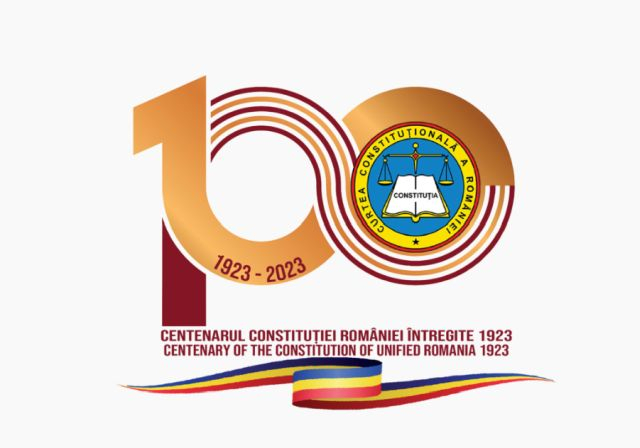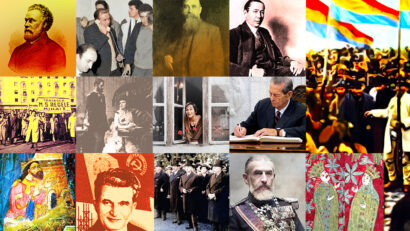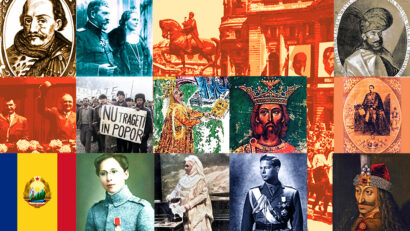The centenary of the 1923 Constitution
The 1923 Constitution reflected Romania's territorial gains in the wake of WWI.

Steliu Lambru, 05.06.2023, 14:00
The
WWI victory of the Entente, a coalition of nations that Romania joined in 1916,
led to the union with the Kingdom of Romania of territories with a majority
Romanian population in Tsarist Russia and Austro-Hungary. In March 1918,
Bessarabia or the eastern Moldavian land between the rivers Prut
and Dniester that had been annexed by Russia in 1812 joined Romania, followed
in November and December by Banat, Bukovina and Transylvania. The Kingdom of
Greater Romania thus created was a brand new and much more diverse
entity than what had existed before.
Romania’s 125-year-old
constitutional history began in 1866, with the coronation of Carol
of Hohenzollern-Sigmaringen and the adoption of the first founding
act of the Romanian state. To date, Romania has had no fewer than seven
constitutions, each reflecting a different type of political regime. The 1866 Constitution
was the founding constitution, that of 1923 was the constitution of the unification,
that of 1938 was the expression of Carol II’s authoritarian regime, while the
next three constitutions were adopted during the communist regime, in 1948,
1952 and 1965. The final one, which is still in force today, was adopted in 1991
and reinstated the values of democracy after the overthrow of the communist
regime in 1989.
The
Constitution of 1923, which was published in the Official Gazette on 29th March,
represented the most refined expression of Romanian constitutional law.
The anniversary of 100 years since its adoption is an opportunity to remember
the biggest Romanian democratic state that was created in the aftermath of WWI
and for which around half a million Romanians sacrificed their lives, at a time
when the country was led by King Ferdinand and Queen Marie.
The Romanian
Academy and the Italian Embassy in Bucharest celebrated together the
anniversary of the 100 years that have since passed. The president of the
Romanian Academy, the historian Ioan-Aurel Pop, outlined the most important
moments in Romania’s constitutional history and discussed the 19th century
Romanian legislation that helped lay the foundations of the future Romanian
state:
Romania had already had a
constitution from 1866, but the general view was that it was no longer fit for
purpose after 1918. Many said the Romanians drafted their constitution very
late. In fact, they did so at the right time, together with most modern states
in Europe. Italy had its own constitution in 1861 after the unification,
incorporating the 1848 constitution created after the revolution in Palermo.
The history of the period prior to the Romanian
Constitution in the 19th century is fascinating. We can see the old
customs disappearing, only to make room for other modern values replacing them.
One such value was the importance of the popular vote.
The historian Ioan-Aurel Pop:
Just as we learned in school, the
Constitution was the fundamental law of the states. I should add of the modern
states, there were no constitutions in the Middle Ages, much as some pundits
would like to push things back in the past. In the Romanian space, the Organic
Regulations of 1831-1832 for Wallachia and Moldavia or the Leopoldine Diploma
of 1691 for Transylvania had been imposed under foreign domination, having a mere
constitutional value, without, however, being the democratic expressions of the
Romanian people’s elected personalities. The Constitution of 1866 was the first such genuine act, written following an advanced European model, the Belgian
model, and tailored to suit the Romanian realities, in a state that had barely
become a constitutional monarchy.
The 19th
century ended properly in the 1920s of the 20th century, after
the great world clash of the 1914 -1918. Everything changed yet again, while the
new circumstances of the newly-emerging state of Greater Romania lead up to the
birth of a new Constitution.
Ioan-Aurel Pop:
In 1918, Romania doubled its population and enlarged its territory, to
be optimistic, not twice but almost three times as much. Therefore, a
unification was needed and a uniformization, primarily a legislative one. And
that, only the Constitution could accomplish. Our Constitution of 1923, adopted
by Parliament, was a democratic one, considering the level of democracy at that
time, and I’d like to add, the level of democracy in the South-east European
states. The document declared Romania a national, unitary and indivisible
state, with an inalienable territory. It was dubbed the Constitution of the
union and was rather short-lived.
Unfortunately, the Constitution of 1923 fell
prey to both totalitarian regimes, fascism and communism. In 1938, it fell
apart under the blows of fascist ideas, while in 1948, when it was barely
reinstated, it was dismantled by the regime of the Communist Party.
The historian Ioan-Aurel
Pop:
After less than two decades of being in force, in 1938, Romania had another constitution. Then,
after World War Two, the one of 1923 had been officially reinstated and was in force until the official instatement of the communist regime in 1947. A little over four decades of communism followed, while the present constitution of
Romania, adopted after 1989, with all the ensuing changes, owes a lot to the
content of the old constitution of 1923. It was a document that was elaborated
after a long period of reflection, it symbolized the formation, from a domestic
legislative point of view, of unified Romania, also proving its perennial dimension.
The Constitution of 1923 re-emerged in 1989 as a
re-founding document of democracy. Its centenary today proves it still is a
landmark of the heritage of Romanian judicial thought.






























